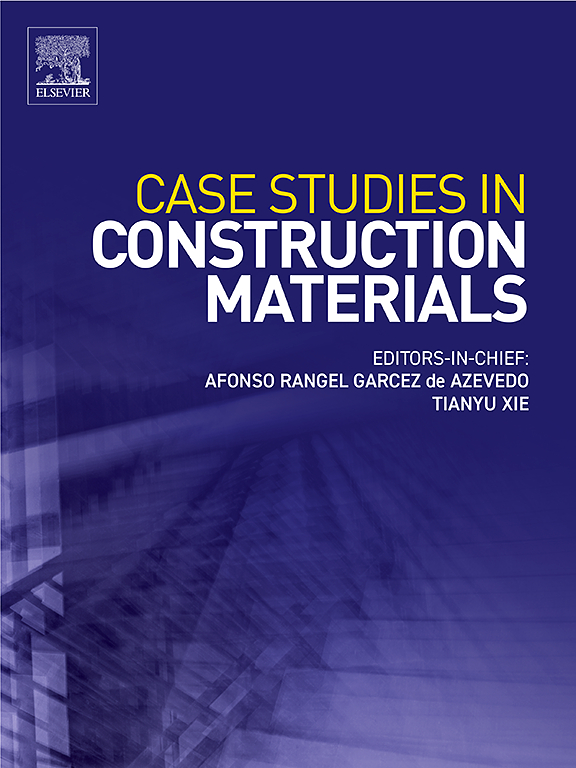Effects of day-night temperature fluctuations on top-down cracking development in road structures
IF 6.6
2区 工程技术
Q1 CONSTRUCTION & BUILDING TECHNOLOGY
引用次数: 0
Abstract
Top-down cracking has become a significant issue in road structures. Temperature is a key factor in the occurrence of top-down cracking. However, there is a lack of research on how day-night temperature fluctuations impact the propagation of top-down cracking in road structures, leading to an incomplete understanding of its development. This study employs the extended finite element method, which is an innovative approach for crack analysis, to create a simulation model of road structure with top-down cracking, integrating thermal boundary theory. The model's accuracy is confirmed through comparison with previous studies. The research then examines the temperature distribution and various influential factors, including ambient temperature, material properties, and cracking characteristics, using the stress intensity factor as the main indicator. It shows that temperature differential and wind speed are key factors influencing the open and shear modes of top-down cracking. Additionally, the study explores the propagation path of top-down cracking in road structure under cyclic temperature loading. Top-down cracking propagates linearly downward within road structure, with displacement showing an increasing trend as the number of temperature cycles rises. The findings provide new insights into the thermally-induced mechanisms behind top-down cracking development in road structures.
昼夜温度波动对道路结构自上而下裂缝发展的影响
自顶开裂已成为道路结构中的一个重要问题。温度是自上而下开裂发生的关键因素。然而,对于昼夜温度波动如何影响道路结构自上而下裂缝的扩展,缺乏研究,导致对其发展的认识不完整。本研究采用创新的裂纹分析方法——扩展有限元法,结合热边界理论,建立了具有自顶向下裂纹的道路结构仿真模型。通过与前人研究的对比,验证了模型的准确性。然后,以应力强度因子为主要指标,考察了温度分布和各种影响因素,包括环境温度、材料性能和开裂特征。结果表明,温差和风速是影响自上而下开裂的开剪模式的关键因素。此外,研究还探讨了温度循环荷载作用下道路结构自上而下裂缝的传播路径。自上而下的裂缝在道路结构内部线性向下扩展,随着温度循环次数的增加,位移呈增加趋势。这些发现为道路结构自上而下开裂发展背后的热诱导机制提供了新的见解。
本文章由计算机程序翻译,如有差异,请以英文原文为准。
求助全文
约1分钟内获得全文
求助全文
来源期刊

Case Studies in Construction Materials
Multiple-
CiteScore
7.60
自引率
19.40%
发文量
842
审稿时长
63 days
期刊介绍:
Case Studies in Construction Materials provides a forum for the rapid publication of short, structured Case Studies on construction materials. In addition, the journal also publishes related Short Communications, Full length research article and Comprehensive review papers (by invitation).
The journal will provide an essential compendium of case studies for practicing engineers, designers, researchers and other practitioners who are interested in all aspects construction materials. The journal will publish new and novel case studies, but will also provide a forum for the publication of high quality descriptions of classic construction material problems and solutions.
 求助内容:
求助内容: 应助结果提醒方式:
应助结果提醒方式:


